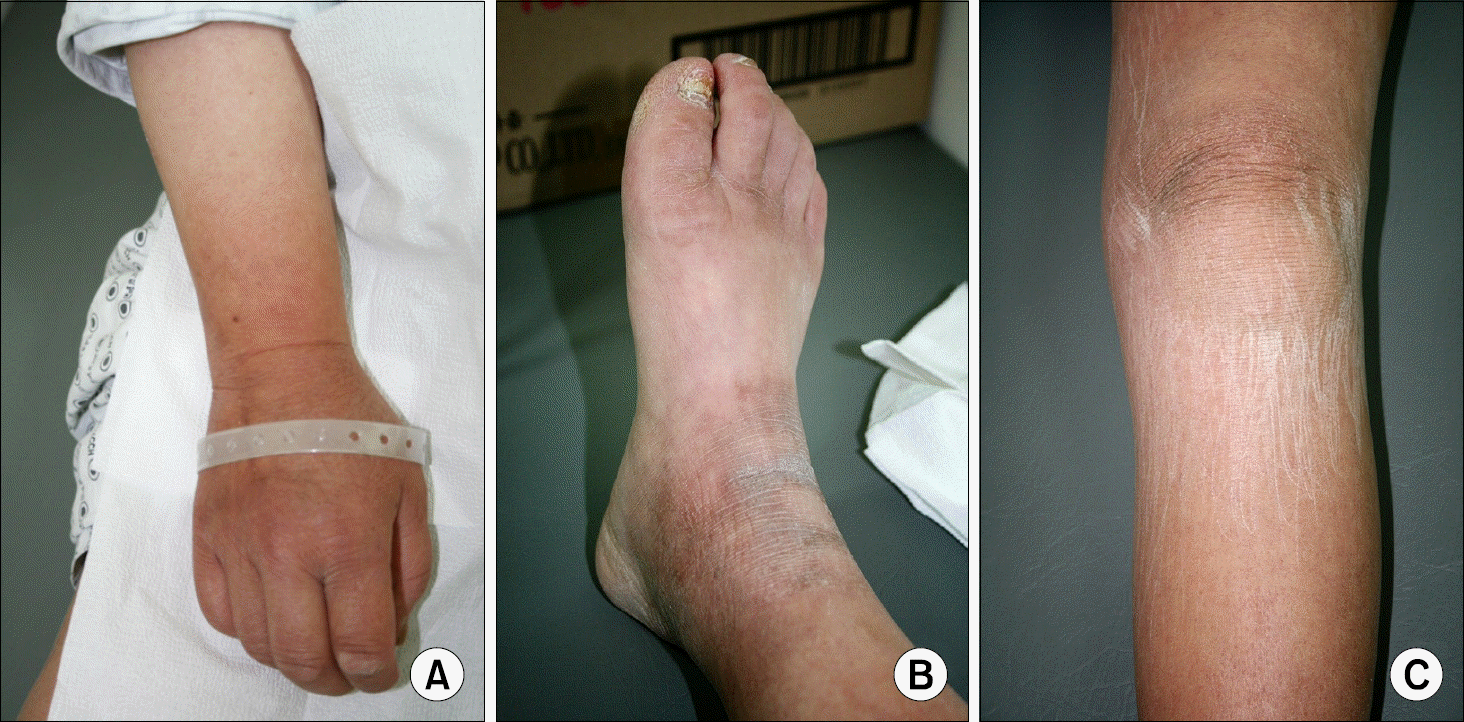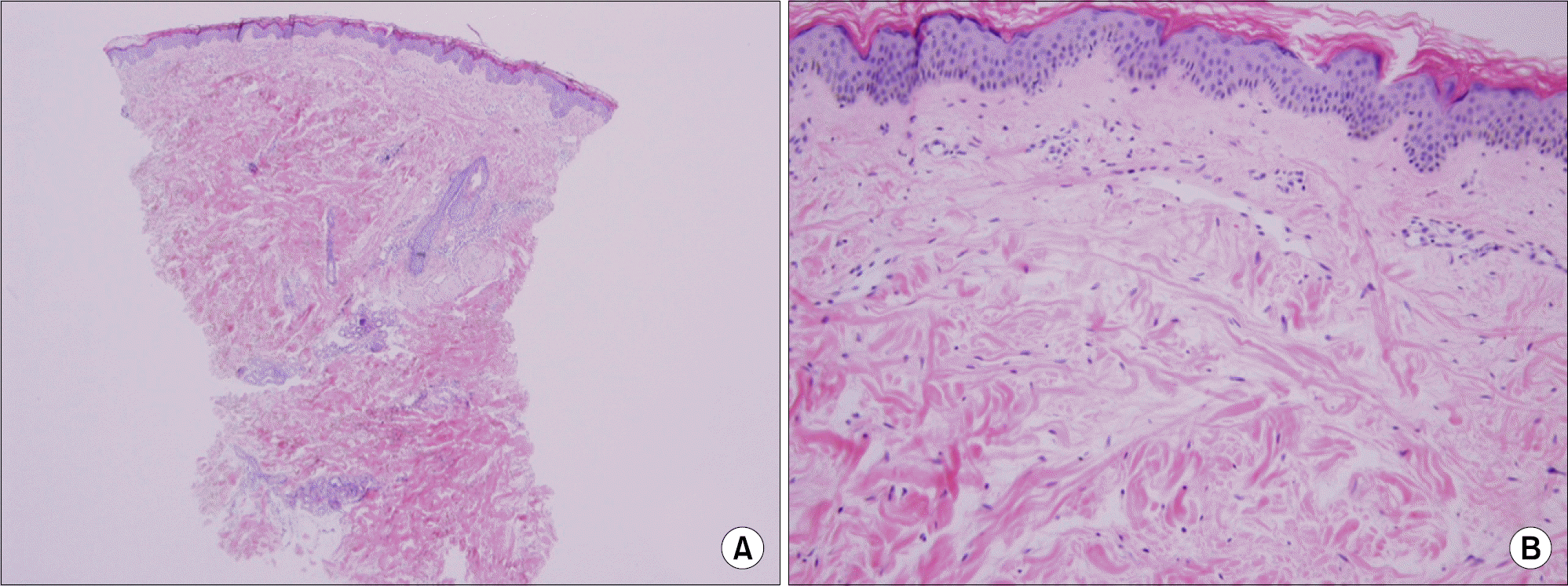Abstract
Docetaxel, an anti-microtubule agent, has been reported to show cytotoxic effects in solid tumors. Its toxicities also in-clude neutropenia, alopecia, skin reaction, and fluid retention. In this study, we report on a case of a 57-year- old Korean female who presented with rapidly progressive scleroderma-like cutaneous changes in the upper and lower extremities after administration of docetaxel. Results of the following tests were normal or negative: full blood count, serum urea, creatinine, electrolytes, liver function test, thyroid function test, rheumatoid factor, anti-nuclear antibody, and anti-topoisomerase antibody. No structural abnormalities were noted on esophagogastroduodenoscopy, chest computed tomography, and Doppler ultrasono-graphy. A biopsy of skin from the left calf showed dermal sclerosis. There was no other explanation for the lesion, except a scleroderma-like cutaneous change induced by docetaxel in this Korean female undergoing treatment for breast cancer.
References
1. Hassett G, Harnett P, Manolios N. Scleroderma in association with the use of docetaxel (taxotere) for breast cancer. Clin Exp Rheumatol. 2001; 19:197–200.
2. Longo D, Fauci A, Kasper D, Hauser S, Jameson J, Loscalzo J. Harrison's principles of internal medicine. 18th ed. p. 2757. New York: McGraw-Hill;2012.
3. Battafarano DF, Zimmerman GC, Older SA, Keeling JH, Burris HA. Docetaxel (Taxotere) associated scleroderma-like changes of the lower extremities. A report of three cases. Cancer. 1995; 76:110–5.

4. Pedersen JV, Jensen S, Krarup-Hansen A, Riis L. Scleroderma induced by paclitaxel. Acta Oncol. 2010; 49:866–8.

5. Kupfer I, Balguerie X, Courville P, Chinet P, Joly P. Scleroderma-like cutaneous lesions induced by paclitaxel: a case study. J Am Acad Dermatol. 2003; 48:279–81.

6. Miniati I, Valentini G, Cerinic MM. Cyclophosphamide in systemic sclerosis: still in search of a ‘real life' scenario. Arthritis Res Ther. 2009; 11:103.

7. Roh MR, Cho SB, Chung KY. Scleroderma-like condition in association with the use of docetaxel. Ann Dermatol. 2004; 16:117–9.

8. Kim HJ, Seo YI, Kwon YS, Kim YM, Park EJ, Kim HA. A case of paclitaxel induced scleroderma in a patient with ovarian cancer. J Rheum Dis. 2011; 18:110–3.

9. Jimenez SA, Hitraya E, Varga J. Pathogenesis of scleroderma. Collagen. Rheum Dis Clin North Am. 1996; 22:647–74.
10. Jun JB, Kuechle M, Harlan JM, Elkon KB. Fibroblast and endothelial apoptosis in systemic sclerosis. Curr Opin Rheumatol. 2003; 15:756–60.

11. Badea I, Taylor M, Rosenberg A, Foldvari M. Pathogenesis and therapeutic approaches for improved topical treatment in localized scleroderma and systemic sclerosis. Rheumatology (Oxford). 2009; 48:213–21.

12. Liu X, Zhu S, Wang T, Hummers L, Wigley FM, Goldschmidt-Clermont PJ, et al. Paclitaxel modulates TGFbeta signaling in scleroderma skin grafts in im-munodeficient mice. PLoS Med. 2005; 2:e354.
13. Kochhar R, Umbreit JN. Fatal exacerbation of paraneoplastic systemic sclerosis after neoadjuvant chemotherapy in a breast cancer patient. Clin Rheumatol. 2004; 23:269–71.





 PDF
PDF ePub
ePub Citation
Citation Print
Print




 XML Download
XML Download